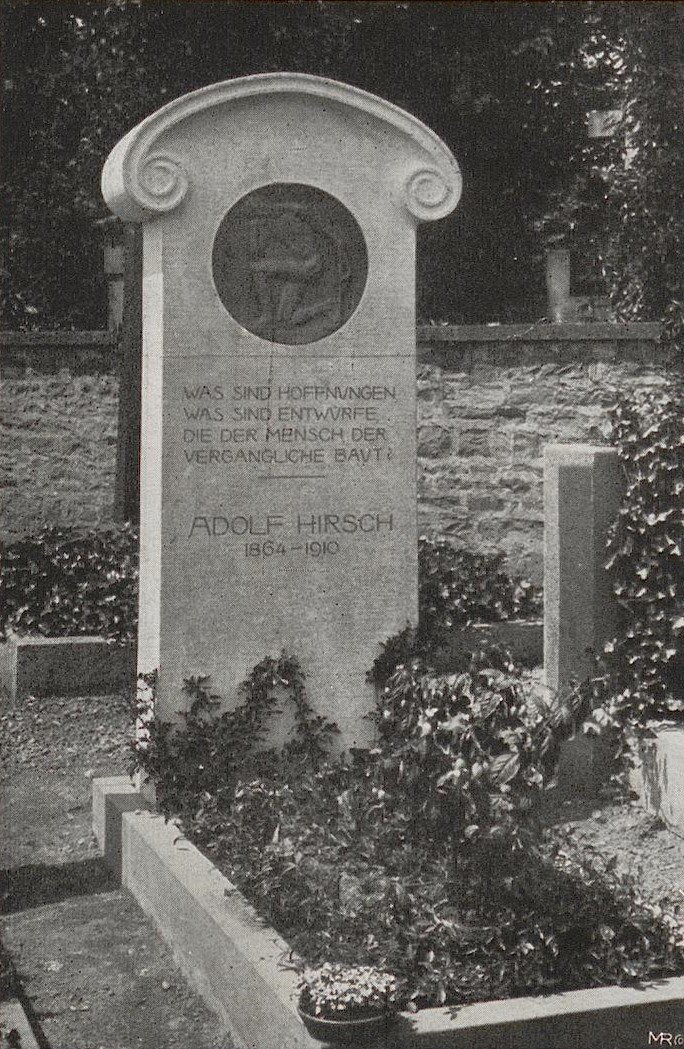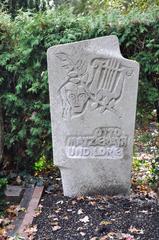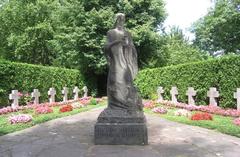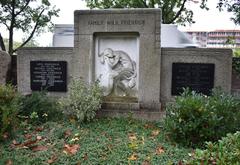
Hauptfriedhof Karlsruhe: Visiting Hours, Tickets, and Historical Guide
Date: 15/06/2025
Introduction
Hauptfriedhof Karlsruhe is a landmark cemetery in southern Germany, celebrated for its pioneering landscape design, rich cultural heritage, and significance in urban development. Established in 1874 as the city’s principal burial ground, it embodies 19th-century shifts in funerary culture, showcasing architectural innovation and serving as a green oasis within Karlsruhe. This comprehensive guide covers its history, design, visiting hours, ticketing, accessibility, and practical travel tips, helping you make the most of your visit to this remarkable site (friedhof-karlsruhe.de; ka-news.de).
Table of Contents
- Origins and Founding
- Landscape Design and Key Architecture
- Expansion and Diversity
- Memorials and Notable Burials
- Visiting Information
- The Cemetery’s Cultural and Social Impact
- Environmental and Civic Engagement
- Frequently Asked Questions (FAQ)
- Conclusion & Recommendations
- References
Origins and Founding
Hauptfriedhof Karlsruhe was established in 1874 to meet the needs of a rapidly growing city and to replace the old cemetery in Oststadt, which had reached capacity. Under the direction of architect Josef Durm, the city acquired land in Rintheim, creating one of the largest cemeteries in southern Germany at the time (ka-news.de). The location, then a half-hour walk from the city gates, reflected a new approach to urban planning and burial customs.
Landscape Design and Key Architecture
Josef Durm’s vision for Hauptfriedhof Karlsruhe was inspired by the English landscape garden style, aiming to merge contemplative green spaces with functional burial grounds. The cemetery features expansive lawns, tree-lined avenues, and architecturally significant structures, such as:
- Roman Triumphal Arch Entrance: A grand entryway that sets the tone for the site’s dignity and scale.
- Gruftenhalle (Crypt Hall): Reminiscent of an Italian Campo Santo, housing 80–90 crypts.
- Cemetery Chapel and Leichenhaus: A Renaissance-inspired chapel with a central rose window, connected to the mortuary by covered walkways, forming intimate courtyards.
- Jugendstil Waiting Hall: Now the InfoCenter, this former tram shelter offers exhibitions and visitor support (stadtlexikon.karlsruhe.de; bestattungshaus-regenbogen.de).
Expansion and Diversity
The cemetery expanded in the early 20th century, including one of Baden’s first crematoria in 1904, reflecting changing burial preferences. Today, the cemetery covers over 34 hectares with about 34,000 graves. Dedicated sections for Orthodox and liberal Jewish communities, an Islamic burial field (established in 1984), and “Mein letzter Garten” for natural burials highlight Karlsruhe’s religious and cultural diversity (ka-news.de; iajgscemetery.org).
Memorials and Notable Burials
Hauptfriedhof Karlsruhe is a site of collective memory, with memorials for:
- War Victims: Dedicated areas for World War casualties, including poignant sculptures.
- Political Resistance: Graves and monuments for victims and resistors of National Socialism, such as Reinhold Frank and Ludwig Marum.
- Notable Citizens: Final resting places of influential figures like Karl Freiherr von Drais and Joseph Victor von Scheffel.
- Bürklin Mausoleum: A listed architectural monument for urn burials (stadtlexikon.karlsruhe.de; meinka.de).
Visiting Information
Hours and Ticketing
- Cemetery Grounds: Open daily from 7:00 AM to sunset (hours may vary by season—check the official website for updates).
- InfoCenter: Open Tuesday, Thursday, and Friday from 9:00 to 14:00 for information, consultations, and tour registration (friedhof-karlsruhe.de).
- Entry Fee: Free for general admission. Guided tours may require advance booking and a fee (around €12 per person; some free options available depending on the program).
Accessibility and Amenities
- Paths: Mostly paved and wheelchair-accessible; some older sections may have uneven terrain.
- Facilities: Benches, rest areas, and public toilets are available. Maps and brochures can be obtained at the InfoCenter.
- Sustainable Practices: Natural burial areas and grounds managed for biodiversity encourage eco-friendly visits (friedhof-karlsruhe.de).
Getting There
- Public Transport: Accessible by tram (lines 2 and 4), with the “Hauptfriedhof” stop at the main entrance (karlsruhe.de).
- Car/Bicycle: Limited on-site parking; bicycle-friendly infrastructure encourages sustainable travel.
Guided Tours
- Themes: Burial rites of different cultures, gravestone symbolism, architecture, notable personalities, war memorials, and cemetery sustainability.
- Duration: Typically 1.5–2 hours.
- Booking: Recommended in advance, especially for special anniversary events (friedhof-karlsruhe.de; karlsruhe-erleben.de).
Nearby Attractions
- Karlsruhe Palace: Historic Baroque residence with gardens.
- Botanical Garden: Adjacent to the palace, featuring rare plants.
- State Art Gallery Karlsruhe: Major art museum nearby.
- ZKM Center for Art and Media: Renowned for contemporary art and digital culture. (trek.zone; touristplaces.guide)
The Cemetery’s Cultural and Social Impact
Urban Green Space and Community Integration
Hauptfriedhof Karlsruhe functions as a “Naturoase” (nature oasis), offering tranquility, biodiversity, and a venue for public engagement. Its accessible, park-like layout makes it a valued recreational and contemplative space (Wochenblatt-Reporter).
Memorialization and Collective Memory
The cemetery is a central site for communal remembrance, especially during commemorative events such as Volkstrauertag. Memorials for war victims, resistance fighters, and prominent citizens foster reflection and reconciliation (Traces of War).
Diversity and Inclusivity
From its inception, Hauptfriedhof Karlsruhe was intended to serve all citizens, regardless of religion or social status (Friedhofsatzung Karlsruhe, §2). Its sections for various faiths reflect Karlsruhe’s multicultural character.
Art, Architecture, and Education
Funerary art, monumental sculptures, and themed guided tours provide insights into the city’s history, art history, and evolving attitudes toward death. Educational programs and anniversary celebrations engage the community and visitors alike (Wochenblatt-Reporter).
Environmental and Civic Engagement
Hauptfriedhof Karlsruhe is a model of sustainable cemetery management. It preserves old-growth trees, supports urban biodiversity, and limits chemical use. Community involvement is encouraged through volunteer programs, grave maintenance, and digital resources such as a searchable grave database (Karlsruhe Grabsuche).
Frequently Asked Questions (FAQ)
Q: What are the Hauptfriedhof Karlsruhe visiting hours?
A: The cemetery is open daily from 7:00 AM until sunset; InfoCenter hours are Tuesday, Thursday, and Friday from 9:00 to 14:00.
Q: Is there an entrance fee?
A: No, entrance to Hauptfriedhof Karlsruhe is free; guided tours may have a modest fee.
Q: Are guided tours available?
A: Yes, regular guided and thematic tours are offered. Advance booking is recommended.
Q: Is the cemetery accessible for visitors with disabilities?
A: Most paths and facilities are wheelchair-accessible. Some older sections may be uneven.
Q: How can I get there by public transport?
A: Take tram lines 2 or 4 to the “Hauptfriedhof” stop; the main entrance is just steps away.
Q: Are there nearby attractions?
A: Yes, including Karlsruhe Palace, Botanical Garden, and State Art Gallery, all within easy reach.
Conclusion & Recommendations
Hauptfriedhof Karlsruhe is more than a cemetery—it is a living archive, a green retreat, and a hub of cultural and civic memory. Its innovative design, commemorative art, and welcoming public spaces offer an enriching experience for every visitor. For up-to-date information on visiting hours, special events, and guided tours, visit the official website. Enhance your visit with the Audiala app for audio-guided tours, and explore nearby attractions to enjoy Karlsruhe’s full historical and cultural offering.
References
- Official Hauptfriedhof Karlsruhe Website
- KA-News: Karlsruhe Cemetery and Park History
- Stadtlexikon Karlsruhe: Hauptfriedhof Karlsruhe
- Bestattungshaus Regenbogen: Hauptfriedhof Karlsruhe Events and InfoCenter
- IAJGS Cemetery Project: Karlsruhe Jewish Cemetery Information
- Karlsruhe-Erleben: Hauptfriedhof Karlsruhe Visitor Information
- meinka.de: Hauptfriedhof Karlsruhe
- Wochenblatt-Reporter: 150 Jahre Hauptfriedhof Karlsruhe
- Traces of War: German War Graves Karlsruhe
- Friedhofsatzung Karlsruhe, §2
- Karlsruhe Grabsuche
- trek.zone: Karlsruhe Attractions
- touristplaces.guide: Karlsruhe Tourist Attractions
For immersive experiences, explore images, virtual tours, and downloadable maps on the official website or via the Audiala app.




























































































































































































